BANDJOUN: TOWN IN THE KOUNG-KHI DEPARTMENT OF THE WEST REGION, CAMEROON.
Covering a vast area of 274km² and with an elevation of 1,530m from sea level lies the stronghold of the BAMILÉKÉ county; BANDJOUN (La 'Djo in local tongue). BANDJOUN is also the capital of the KOUNG-KHI department, and one of the largest traditional chiefdoms in the county.
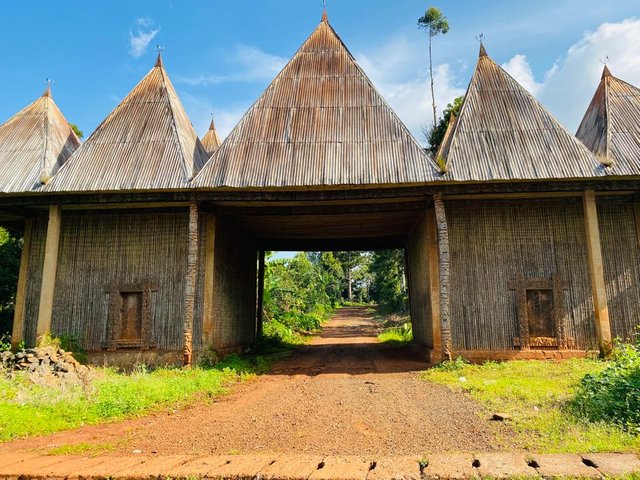
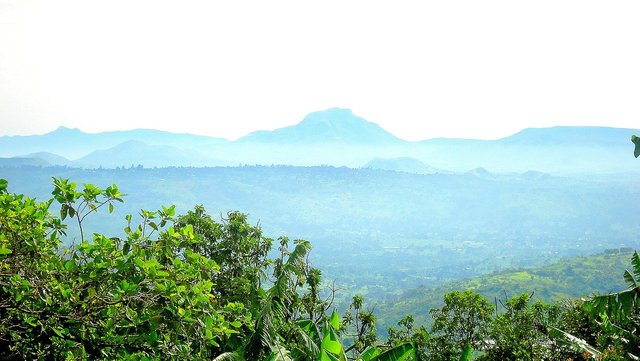
HISTORY
The recent history of the BANDJOUN people is relatively well known today. Modern history, however, covers only the last two centuries.
It is now well known that King Foudoup was the first King of BALENG who reigned between 1545 and 1573.
King Foudoup was succeeded by his son Tchoungafo who, in turn, reigned from 1573 to 1628. Tchoungafo installed and inducted his son Notouom I in 1589 to the BANDJOUN throne. He was assured of that office as the successor to his father who is the founder of BANDJOUN.
During the long reign of Notouom I, which lasted until 1641, he worked to increase the population of BANDJOUN by buying all that he could acquire (cattle, food, valuables, and slaves whom he freed to integrate them into his kingdom). It was under his royal magistracy that the name BANDJOUN originated with the term Pa Djo meaning "those who buy". Very expansionary, he made all the smaller heads of villages vassals and modernised his kingdom administratively and militarily. He created administrative districts called Djie. The achievements of Notouom I has made the entire BAMILÉKÉcounty to be well known over the centuries for their business skill set.
Notouom I was succeeded by his son Notouom II who consolidated the achievements of the kingdom of his father and strengthened the prestige of BANDJOUN in the region. His reign was also long, as well as that of his successor Notouom III.
Over the many years, the enthronement of the kings of BANDJOUN and BALENG are done under the patronage of both parties. The most recent enthronement was in 2013. This has strengthened their relationship.
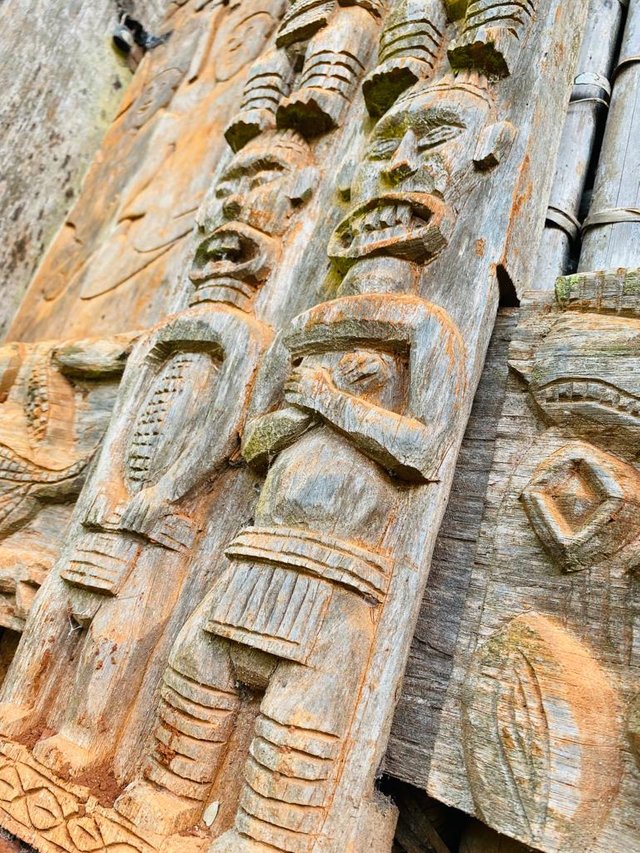
This large hut is a symbolic icon of the people of BANDJOUN and it measures 17 metres high and was once the residence of the Chief. It was built by King Notouom I about four centuries ago. Since then it has been regularly restored. Its attic is used as a granary for reserves of wood, peanuts and corn as with other huts. The hut contains 3 rooms and a meeting room decorated with lion skins - symbol of the Chief, panther skins - symbol of great nobles, and doors with engravings of lizards - symbol of lower notables. The hut is supported by carved pillars with those in the middle the oldest, having survived three fires that occurred in the chiefdom.
ARCHITECTURE
BANDJOUN is well known for its fine architectural craftsmanship and these designs have been well preserved over the centuries.
The facades are made of bamboo interwoven with plant fibres with some featuring geometric patterns. The doors are framed with carved panels are elevated 50 cm above the ground so that runoff and animals can not enter. The whole is surmounted by a conical roof which is heavy and thick enough to not let raindrops filter through.
The outside of the hut has been changed despite the desire of some BAMILÉKÉ notables who wish to keep the old local architecture. The thatched roof has been replaced by a corrugated iron roof and the walls are not covered with bamboo curtains. In the inside of the huts, however, everything remains the same. The fireplace is at the centre of the main room; three stones are enough to support the pots. All the furniture is made of bamboo such as the ladder to climb to the attic as well as the shelves for household utensils, beds, and stools.
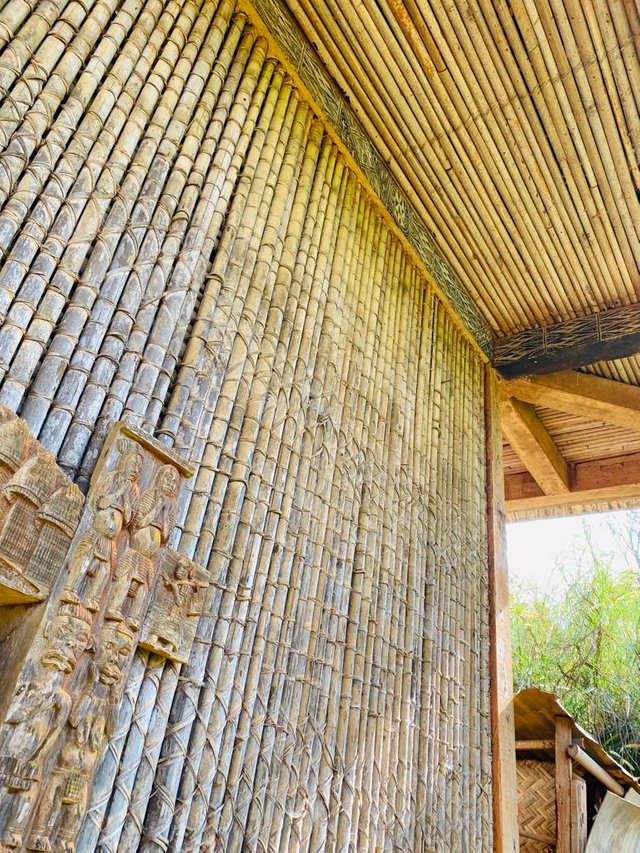
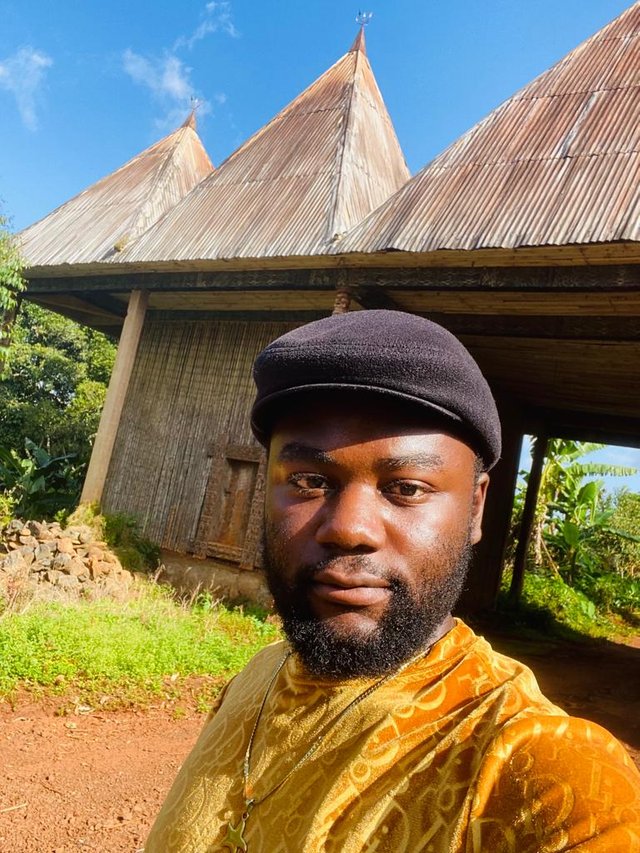
I hope you enjoyed this brief geographical, historical and architectural write up about BANDJOUN.
Thanks for reading ❤️
@boradofx @steemcurator03 @steemcurator04 @saxopedia
_le_symbole_supreme_et_representatif_de_la_chefferie_et_du_peuple_Bandjoun.JPG)
What a great history I never knew of, thanks for sharing with us. Atleast if I go somewhere that something of this sort is been spoken about atleast I can say something. Thanks for sharing
How wonderful to know, it's so amazing,I am happy to have partaken in this great history, thanks very much for sharing
Great write up bro. Actually learnt a lot
At times a little History is what we need. Nice work man